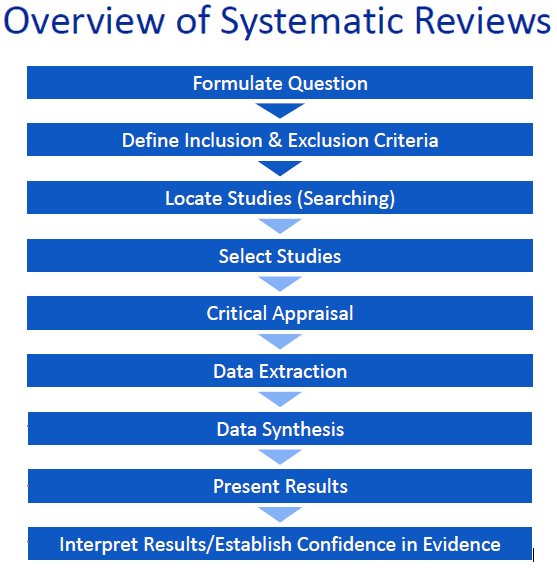
Recently, the wonderful Ibone Olza (Perinatal Psychiatrist and Childbirth Activist from Childbirth is Ours, Spain) contacted me about her work on obstetric violence, birth rape and professional trauma. After reading her papers and watching her present her work, I was compelled to document and reflect upon some of the issues raised, here.
The following points are made within the paper: Fernández, Ibone Olza. “PTSD and obstetric violence.” Midwifery today with international midwife 105 (2013): 48-9.
Birth trauma has been defined as “Actual or threatened injury or death to the mother or her baby” (Beck 2008). Yet such trauma lies in the eye of the beholder, therefore, any trauma experienced by either the mother, newborn or the birth attendant may be due to a subjective experience of stress which does not need to fit any particular criteria necessarily. This means that some traumatic events may be subjective in their nature, and as such, we cannot judge what may or may not cause another person trauma. It is a personal interpretation or perception.
A meta-ethnographic analysis of studies about women’s perceptions and experiences of a traumatic birth reported that women are often traumatized as a result of the actions or inactions of midwifery staff (Elmir et al. 2010). Whatever, such inactions or actions may be…women often use words such as ‘barbaric’, ‘intrusive’, ‘horrific’ and ‘degrading’ to describe their mistreatment (Thomson and Downe 2008).
For Hodges, drugging or cutting a pregnant woman with no medical indication is an act of violence, even when performed by a medical professional in a hospital. Inappropriate medical treatment is also clearly abusive, although few women are aware that this is deliberate mistreatment (Hodges 2009).
The term ‘birth rape’ has been used by women who feel that their bodies have been violated. Kitzinger highlighted that many women who have experienced a traumatic birth display similar symptoms to rape survivors (Kitzinger 2006). The video below explores these issues in greater detail, as we can hear the lovely Ibone Olza sharing this work.
One of the things I was most encouraged about, was that Ibone Olza considers the wellbeing of the midwifery staff in her work. Birth attendants are often also traumatized by these acts, and may feel powerless to intervene. In a recent study by Beck, 26% of obstetric nurses met all the diagnostic criteria for screening positive for PTSD due to exposure to their patients who were traumatized (Beck and Gable 2012). Being present at abusive deliveries can magnify staffs’ exposure to birth trauma.
staff use phrases such as…
“the physician violated her”
“a perfect delivery turned violent”
“unnecessary roughness with her perineum”
“felt like an accomplice to a crime”
“I felt like I was watching a rape.”
….to describe the guilt that ensued when they felt like they had failed women or they did not speak up and challenge/question…
Article 51 establishes that: The following acts implemented by health personnel are considered acts of obstetric violence:
- Untimely and ineffective attention of obstetric emergencies
- Forcing the woman to give birth in a supine position, with legs raised, when the necessary means to perform a vertical delivery are available
- Impeding the early attachment of the child with his/her mother without a medical cause thus preventing the early attachment and blocking the possibility of holding, nursing or breastfeeding immediately after birth
- Altering the natural process of low-risk delivery by using acceleration
techniques, without obtaining voluntary, expressed and informed consent of the woman - Performing delivery via cesarean section, when natural childbirth is possible, without obtaining voluntary, expressed, and informed consent from the woman
(D’Gregorio 2010)

Yet whilst people do bad things, it is important to remember that they are not necessarily bad people…
This work explains how professionals may exert obstetric violence due to:
- Lack of technical skills to deal with emotional and sexual aspects of childbirth.
- Unsolved trauma. The medicalization of childbirth produces more severe iatrogenic
complications (Johanson, Newburn and Macfarlane 2002; Belghiti et al. 2011). If the
professionals do not have a supportive space to reflect or to deal with this aspect of iatrogenic care, they may fall into a spiral of continuously increased medicalization as a defensive strategy. Childbirth is then perceived as a very dangerous event, “a bomb ready to explode,” without realizing that interventions cause more unnecessary interventions and pain. - Professional burnout in birth attendants will lead to increased dehumanized care and therefore never-ending figures of women experiencing childbirth as very traumatic.
..and so the challenge will be to identify and address these root causes to ensure that maternity staff are able to provide excellence in midwifery care. My work explores how we might support the psychological wellbeing of health care staff may increase levels of humanity and compassion in care. I hope to keep in touch with Ibone Olza and many others around the world who share the same passion for this work. Together we may collectively work towards a time where maternity workers are psychologically safer, and therefore better able to provide the excellence in care they strive to give.
If you would like to follow the progress of my work going forward..
Follow me via @SallyPezaro; The Academic Midwife; This blog
Until next time…Look after yourselves and each other 💚💙💜❤
References and further reading
- Soet JE, Brack GA, DiIorio C. Prevalence and predictors of women’s experience of psychological trauma during childbirth. Birth 2003 Mar;30(1):36-46.
- Creedy DK, Shochet IM, Horsfall J. Childbirth and the development of acute trauma symptoms: incidence and contributing factors. Birth 2000 Jun;27(2):104-111.
- Ayers S, Pickering AD. Do women get post traumatic stress disorder as a result of childbirth? A prospective study of incidence. Birth 2001 Jun;28(2):111-118.
- Beck CT, Gable RK, Sakala C, Declercq ER. Post traumatic stress disorder in new mothers: results from a two stage U.S. national survey. Birth 2011 Sep;38(3):216-227.
- Allen S. A qualitative analysis of the process, mediating variables and impact of traumatic childbirth. Journal of Reproductive and Infant Psychology 1998;16(2-3):107-131.
- Beck CT, Watson S. Impact of birth trauma on breast-feeding: a tale of two pathways. Nurs Res 2008 Jul-Aug;57(4):228-236.
- Beck CT. Post-traumatic stress disorder due to childbirth: the aftermath. Nurs Res 2004 Jul-Aug;53(4):216-224.
- Beck CT. Birth trauma: in the eye of the beholder. Nurs Res 2004 Jan-Feb;53(1):28-35.
- Ayers S. Delivery as a traumatic event: prevalence, risk factors, and treatment for postnatal posttraumatic stress disorder. Clin Obstet Gynecol 2004 Sep;47(3):552-567.
- Olde E, van der Hart O, Kleber R, van Son M. Posttraumatic stress following childbirth: a review. Clin Psychol Rev 2006 Jan;26(1):1-16.
- Elmir R, Schmied V, Wilkes L, Jackson D. Women’s perceptions and experiences of a traumatic birth: a meta-ethnography. J Adv Nurs 2010 Oct;66(10):2142-2153.
- Nicholls K, Ayers S. Childbirth-related post-traumatic stress disorder in couples: a qualitative study. Br J Health Psychol 2007 Nov;12(Pt 4):491-509.
- Ayers S. Thoughts and emotions during traumatic birth: a qualitative study. Birth 2007 Sep;34(3):253-263.
- Thomson G, Downe S. Widening the trauma discourse: the link between childbirth and experiences of abuse. J Psychosom Obstet Gynaecol 2008 Dec;29(4):268-273.
- Goldbort JG. Women’s lived experience of their unexpected birthing process. MCN Am J Matern Child Nurs 2009 Jan-Feb;34(1):57-62.
- Sawyer A, Ayers S. Post-traumatic growth in women after childbirth. Psychol Health 2009 Apr;24(4):457-471.
- Hodges S. Abuse in hospital-based birth settings? J Perinat Educ 2009 Fall;18(4):8-11.
- Kitzinger S. Birth as rape: There must be an end to ‘just in case’ obstetrics. British Journal of Midwifery 2006;14(9):544-545.
- Beck CT. The anniversary of birth trauma: failure to rescue. Nurs Res 2006 Nov-Dec;55(6):381-390.
- Beck CT, Gable RK. A Mixed Methods Study of Secondary Traumatic Stress in Labor and Delivery Nurses. J Obstet Gynecol Neonatal Nurs 2012 Jul 12.
- Perez D’Gregorio R. Obstetric violence: a new legal term introduced in Venezuela. Int J Gynaecol Obstet 2010 Dec;111(3):201-202.
- Callister LC. Making meaning: women’s birth narratives. J Obstet Gynecol Neonatal Nurs 2004 Jul-Aug;33(4):508-518.
- Johanson R, Newburn M, Macfarlane A. Has the medicalisation of childbirth gone too far? BMJ 2002 Apr 13;324(7342):892-895.
- Belghiti J, Kayem G, Dupont C, Rudigoz RC, Bouvier-Colle MH, Deneux-Tharaux C. Oxytocin during labour and risk of severe postpartum haemorrhage: a population-based, cohort-nested case-control study. BMJ Open 2011 Dec 21;1(2):e000514.














